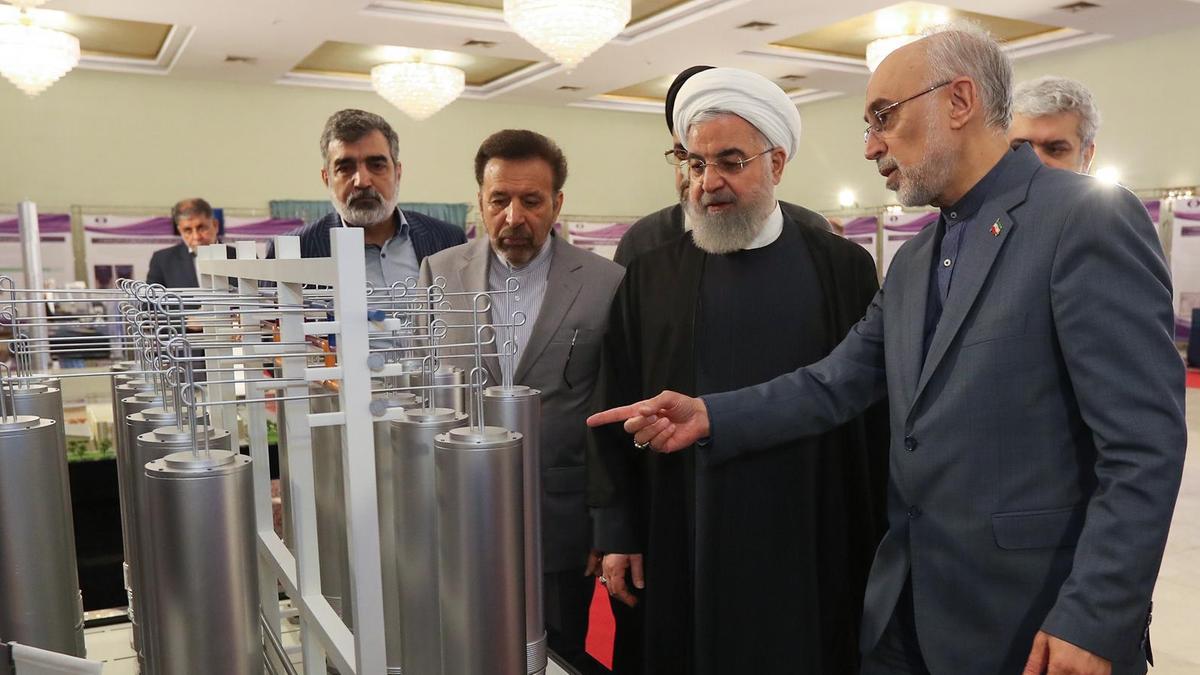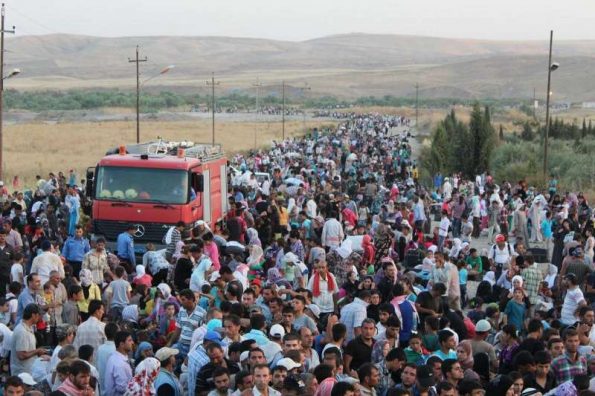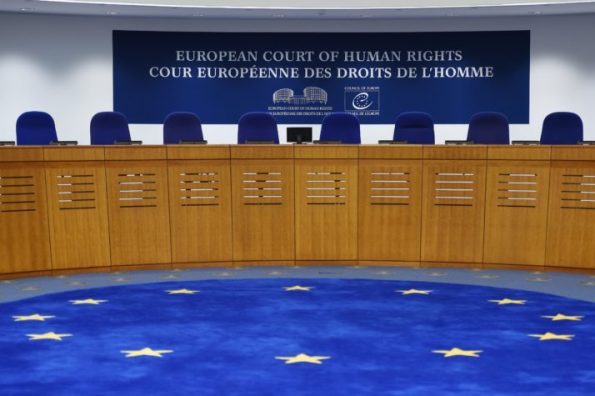
The Iranian nuclear programme started with the help of the US in the early 1960s-70s called “Atom for Peace program”. Iran, under the leadership of Shah, was a close US ally. The then Iranian government leadership anticipated that their oil reserves are insufficient to meet the population’s demand and to support economic development. Given this narrative, the University of Stanford Research Institute predicted that Iran needs almost 20,000 MW nuclear energy by 1990 to suffice their needs. The Shah planned to build 20 nuclear power reactors and joined the Nuclear Non-Proliferation Treaty (NPT) in 1968, and following two years, in 1970, they ratified the treaty (Hussain, 2015). In 1974, Iran signed the agreement with the International Atomic Energy Agency (IAEA) to give IAEA complete monitoring and inspection access. To build the Shah’s planned nuclear reactors the construction of the nuclear reactor was started with the help of American and European contractors. To make it happen in 1974 Iran extended $1 billion loans to the European nuclear manufacturer Eurodif, “in return for the supply of 10% of the company’s fuel production” (Reardon, 2012: 11). However, the bitterness in U.S-Iran relation started when the Islamic Revolution began under the leadership of Ayatollah Khomeini, toppled down the Shah, countered and deterred US involvement. The bilateral relations further aggravated following by US support to Iraq in the Iran-Iraq war in 1980-1988. All these ended up with Khomeini’s tough stance “neither East nor West” and objurgated “prevailing bipolar global politics” (Hussain, 2015: 31). Given Ayatollah Khomeini’s view, he regarded the Iranian nuclear programme against the Islamic principles and a western phenomenon.
|
By Rahimullah Kakar |
The nuclear program was suspended, and numerous engineers and nuclear scientist were lost as a result of the revolution. Following the death of Ayatollah Khomeini in 1989, the nuclear program restarted and the continued seeking new suppliers of nuclear technology. Russia and China extended their hands of cooperation. In early 1995, Atomic Energy Organization of Iran (AEOI) signed a contract worth $1 billion with Russian firm Zarubezhatomenergostroi aimed to complete the Busher power plant. This contract was aimed to construct the plant that could provide a 900 MWe Light Water Reactor (LWR) (Reardon, 2012). This was the very initial start of a chapter of Iranian-Russian nuclear cooperation. Meanwhile, China was also a significant supplier of Tehran. In the wake of 1990s, China facilitated Tehran with “research reactor, laser enrichment equipment” and also Iran signed a contract to obtain 3200 MWe LWR and as well a research reactor capable of producing plutonium for a nuclear (Reardon, 2012: 13). This era was marked by the US diplomatic pressure on Iran and their suppliers. The US found that Russia was providing Iran with “plutonium reprocessing and uranium enrichment facilities” (Reardon, 2012).
The EU and US-Iran political clash over the nuclear program can be traced back to this era. Given the P5+1 global leading states persistent efforts to curtail Iranian nuclear but the eventual result of the deal depends on the actual threat followed by actual time pressure will work. However, this will be possible with a threatening country’s reputation in regards to making threat vis-à-vis the opponent. Both the EU and the US jointly took many initiatives to succeed in curtailing the Iranian nuclear program. However, the question arises what makes the eventual result successful, merely threatening or taking further initiatives that support the demand of the EU and the US successful? The current American president Donald Trump known for a tough stance on bilateral and multilateral treaties and agreements has withdrawn from the JCPOA. Trump threatens imposing more sanctions and measures to curtail the Iranian nuclear program. Looking to Trump’s tough stance in regards to the US-Canada, and Mexico North American Free Trade Agreement (NAFTA), and his tough stance to withdraw from the international climate agreement known as the Paris accord indicated his decisiveness. Given this case, the credibility of the US, in particular, Trump, depends on what he could extract as an eventual result from his recent economic threatening of Iran in regards to sanctions.
The EU and the US Efforts vis-à-vis Iranian Nuclear Deal
The EU-Iran negotiations in regards to the nuclear programme suspension started in 2002. Iranian nuclear programme enrichment was made public when an Iranian opposition movement, National Council of Resistance, publicised nuclear enrichment which the western intelligence agencies have already obtained access to that information. The fact of this information was confirmed when the IAEA visited Tehran and confirmed the nuclear enrichment programme. After a few rounds of negotiation, it paved the way to agree on EU-3, (Germany, France, and the UK) and Iran on meeting in October 2003. The then foreign ministers of respective countries met and agreed to suspend the programme but has not complied on the given demand. The EU efforts were continued until they succeeded to bring Russia and China on the same page to abstain using their veto against an IAEA resolution, shows that Iran was violating the IAEA statute (Sauer, 2007: 620). However, during a couple of years IAEA’s few rounds of monitoring they found the Iranian government did not comply with its IAEA principles. Following these violations, the IAEA sent the file to the UN Security Council for further sanctions to be imposed on Iran.
After years of disagreement, the world-leading powers P5+1 (China, Russia, France, United Kingdom, United States of America and Germany) and Iran reached an agreement on 14 July 2015, called Joint Comprehensive Plan of Action (JCPOA) a detailed 159-pages agreement. The agreement is aimed that Iran will comply with the conditions and principles outlined in the agreement. Hence, the mentioned principle in the agreement will also be verified by the IAEA agency (Davenport 2018). As Russia and China already since the beginning of the Iranian nuclear clashes have been in cordial relations. EU leading countries as France, Germany, and Italy also due to its trade with Iran make them flexible and pursue cautious steps in regards to the nuclear deal. Iran produces 4.2 million barrels oil a day (out of 84 million worldwide). The regional country, China, imports 14 per cent of oil from Iran, following by Italy 9 per cent and France 6 per cent. Hence, Austria, Germany except for the USA also have substantial non-energy relations. These countries will, either way, be hurt by a sanctioned Iran. Not surprisingly, they will hesitate to back more economic sanctions (Sauer, 2007). Because the sanctioned Iran will, one way or another, hurt their imports and particularly the oil imports. On the one hand, China and Russia had vetoed sanctions on Iran. Further sanctions will be compensated by these two regional states. The US will remain either alone or with less support.
Iran gravitated on the right track that was agreed upon by P5+1. The EU and the US Administration under President Obama, following the deal, continued to lift partial sanctions on Iran. However, the deal once again falls under the hardliner President Trump administration. Surprisingly, the US Administration withdrawal announcement not only shocked Iran but also the EU and partners of the JCPOA. During the first few months of President Trump’s administration, in early May 2017, he announced that the JCPOA neither serve the interest of America nor of its allies, hence, the deals merely provided the opportunity for Iran to seek nuclear weapon at a later date (Balakrishnan, 2018). The question arises, how does the U.S sanction hurt the Iranian economy and what alternatives does Iran have to compensate it? Given the JCPOA and Iran deal under the IAEA monitoring that will gradually and systematically lead to the agreement agreed as during the deal. However, The US hard stance at such time will not leave any reason for Washington to impose sanctions. Because strong regional countries, Russia and China, including the EU are on the same track to make Iran compel to comply by the principles enshrined in the last deal. The EU soft and flexible negotiations may work better than the US However, given the intensity of the US threat that somehow looks more credible. However, all those threats by the US come in a non-conducive way which even the allies do not seem to agree with the hard stance of Trump’s unexpected withdrawal.
The US withdrawal from the Accord and its Repercussion
As previously illustrated, the 2015 nuclear deal among the world-leading powers in regards to Iranian flexibility to limit their nuclear program and allow the IAEA to monitor and inspect their activities. Given that deal, including the US, UN and EU relieved economic sanctions on Iran. The IAEA also assured that Iran exhibits compliance with the deal. However, the current US administration under Trump has announced their withdrawal and termed the deal “one of the worst deals” ever negotiated (Davenport, 2017: 30). Davenport (2017: 25) argues that the US withdrawal from the accord not only “jolts” the US-Iran relations but will also affect relations with Russia, China, allied powers in Europe. Despite all green signals from Iran to abide the accord, and optimism among the states who are part of the deal, Trump’s immediate decision made them surprised. This is going to give Iran an upper hand that is bound by the obligations and would pretend that the problem lays with Washington. Absence of evidence of Iran’s failure to comply would give Iran a reason to justify the US contravene and restart the nuclear activities (Davenport, 2017: 25). The US will be faced with two likely repercussions; frosty relations with the members of JCPOA, and will give Iran another reason to continue advancing their nuclear program. However, Iran is yet hoping the US to renegotiate over the deal. Iran’s historical flexibility exhibits giving up on their deal and willingness to abide by the accord sincerely. Davenport says, following Trump decision of withdrawal, Iranian officials demonstrate a willingness to implement the deal even in the absence of the US Despite Trump’s hard stance and unknown demand what else he expects. However, his rival, President Hassan Rouhani, says that Iran “will return to a much more advanced situation” (ibid: 27). This also indicates that Iran is determined to give further time for the US to convince them and return back to a negotiation table.
To sum up, the US unilateral action withdrawing from the deal and re-imposing economic sanctions and pursuing coercive measure will not only step back Iran from enriching their uranium but will also make Iran pave the North Korean fast-track attainment of nuclear weapons. Perhaps, helps put more hard-line Iranian in power instead of Rouhani. Russia and China will continue their economic relations and could easily be compensated. The strategic US ally, EU, and the agency responsible for monitoring, IAEA, also do not seem to be in line with the Trump decision. A diplomatic and soft version of negotiation will culminate with the win-win situation both for P5+1 and Iran.
Concluding Remarks
Iran’s nuclear clash with the US and EU dates back to 1980s. The zigzag relations from a good friend to a worse foe started in 1979s and yet continued towards an uncertain trend. The Iranian nuclear program started with the cooperation of the EU and the US and ended up with the worst animosity. The trust deficit began with the fall of the Shah in Iran. The US and EU relations with the consequent regimes in Iran following the Shah have been marred with détente to antagonism. Iranian flexibility will pave the way for a rapprochement and resumption of relations but will take more time until the trust is gradually resumed among these actors. The EU, in particular, actors as part of the JCPOA; Germany, France, and the UK, are taking cautious measures in regards to the Iranian nuclear programme. The EU-model of coercive diplomacy compared to the US coercive diplomacy would be much more of a win-win situation. Because Iran is exhibiting flexibility, and the IAEA assessed the Iranian effort positively, which means Tehran is complying by the principles as agreed upon. The US coercive diplomacy will lead to compelling Iran to pursue a North Korean fast-track nuclear attainment. To make the deal successful the US shall unify and harmonise their efforts with the partners of JCPOA, and the principles agreed upon by all sides. Given the role of Russia and China as regional actors and their long-time trade partnership with Iran, their influence as veto powers backed by the EU flexible diplomatic pursuit will likely lead to a peaceful curtailment of the Iranian nuclear programme.
To sum up, two likely possibilities can help to stop Iran enriching uranium. First, the EU model of coercive diplomacy and second, creating a common ground with Russia and China to abstain from helping Iran in regards to sanctioning compensation and helping in the nuclear programme. Once common ground is created with China and Russia, the EU would easily convince Iran to abstain developing its nuclear programme for military purposes. The long-lasting stalemate would wrap up with peaceful means and will lead to a win-win situation.
References
Balakrishnan, M. 2018. “Iran’s Nuclear Program under Trump: Coercive Diplomacy Redux,” NATO Association of Canada (NAOC). 14 June. Accessed. 5 January 2019. https://bit.ly/2tGmJGC
Davenport, K. 2015. “Iran, P5+1 Formally Adopt Nuclear Deal.” Arms Control Association 45(9):21-23.
Davenport, K. 2017. “EU Bolsters Iran Nuclear Deal.” Arms Control Today, (July-August) 47(6). 33-34.
Davenport, K. 2017. “Trump Faces Risks with Iran Sanctions” Arms Control Association, (March) 47(2): 30-31. https://bit.ly/2IJAEWH
Drury, C. 2001. “Sanctions as Coercive Diplomacy: The U. S. President’s Decision to Initiate Economic Sanctions.” Political Research Quarterly 54(3):485-508.
Davenport, K. 2018. “The Joint Comprehensive Plan of Action (JCPOA) at a Glance,” Arm Control Association. Accessed. 10 January 16, 2019. https://bit.ly/2rrNekO
Davenport, K. 2017 “Trump Signals Iran Deal Showdown.” Arms Control Association, (September): 47(7) 25-27. https://www.jstor.org/stable/10.2307/90012869
Fernholz, T. 2018. “Europe, China and Russia are making a special fund to get around US sanctions on Iran,” Quartz, September 25. Accessed. 21 January 28, 2019.
Hussain, N. 2015. “US-Iran Relations: Issues, Challenges and Prospects.” Pluto Journals 12(2): 29-47.
Mark J. Valencia. 2018. “South China Sea tensions: does the US have an endgame, beyond war?” South China Morning Post, 7 June. Accessed. 12 January 16, 2019. https://bit.ly/2H8qEE6
Pieper, M. 2013. “Dragon Dance or Panda Trot? China’s Position towards the Iranian Nuclear Programme and Its Perception of EU Unilateral Iran Sanctions.” European Journal of East Asian Studies, 12(2): 295-316.
Reardon, R. 2012. “Iran’s Nuclear Program: Past, Present, and Future.” Containing Iran, RAND Corporation: 9-64.
Sauer, T. 2007. “Coercive Diplomacy by the EU: The Iranian Nuclear Weapons Crisis.” Third World Quarterly 28(3): 613-633.
Schwammenthal, D. 2018. “Europe, the US and the Iran deal: The need to resolve transatlantic disagreements.” European View 17(2): 218–226.
Shenaa, J. 2010. “The Case Against the Case Against Iran: Regionalism as the West’s Last Frontier.” Middle East Journal, 64(3):341-363.
To Download the PDF, click here…



